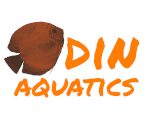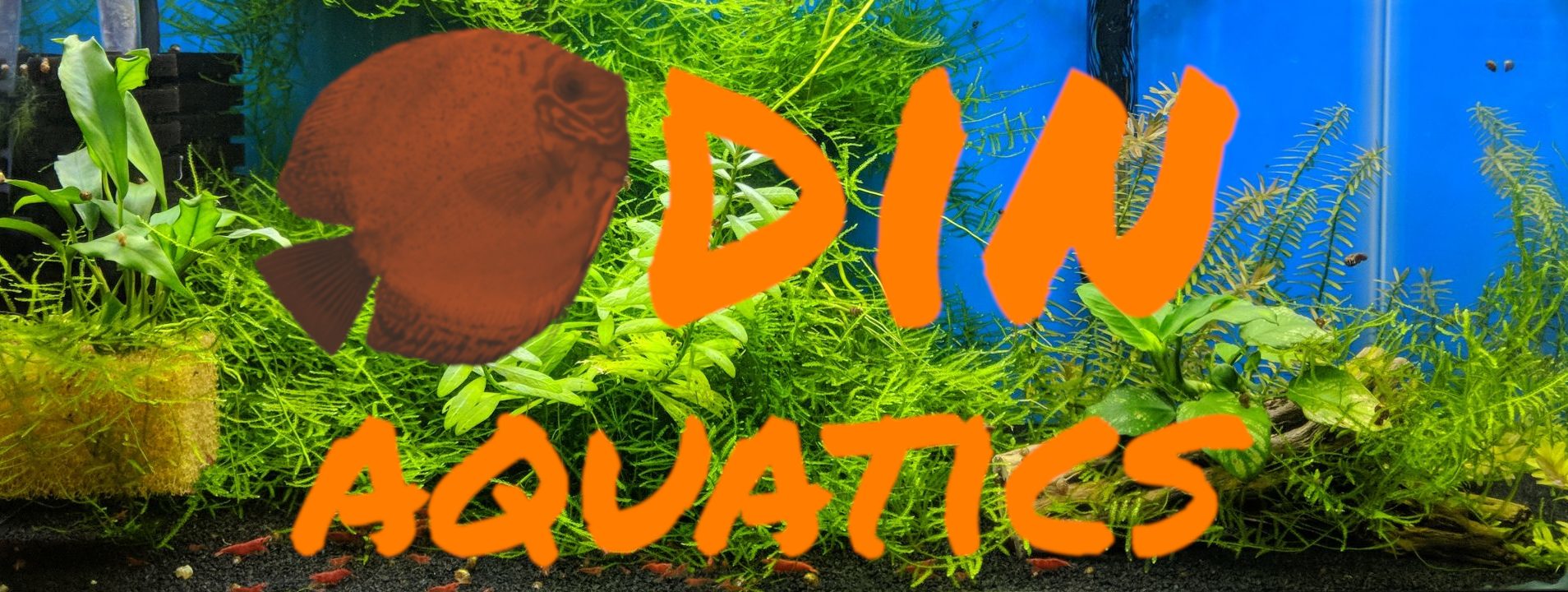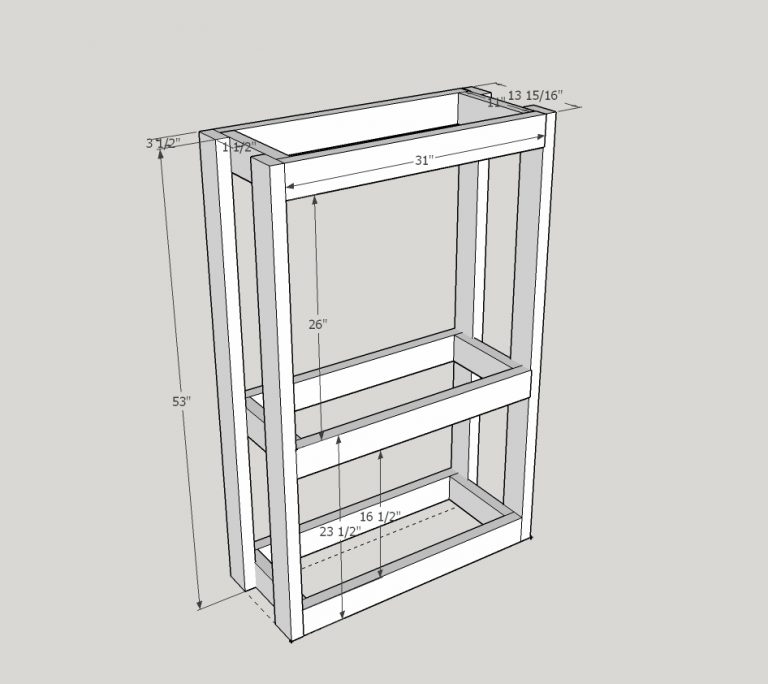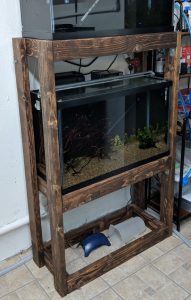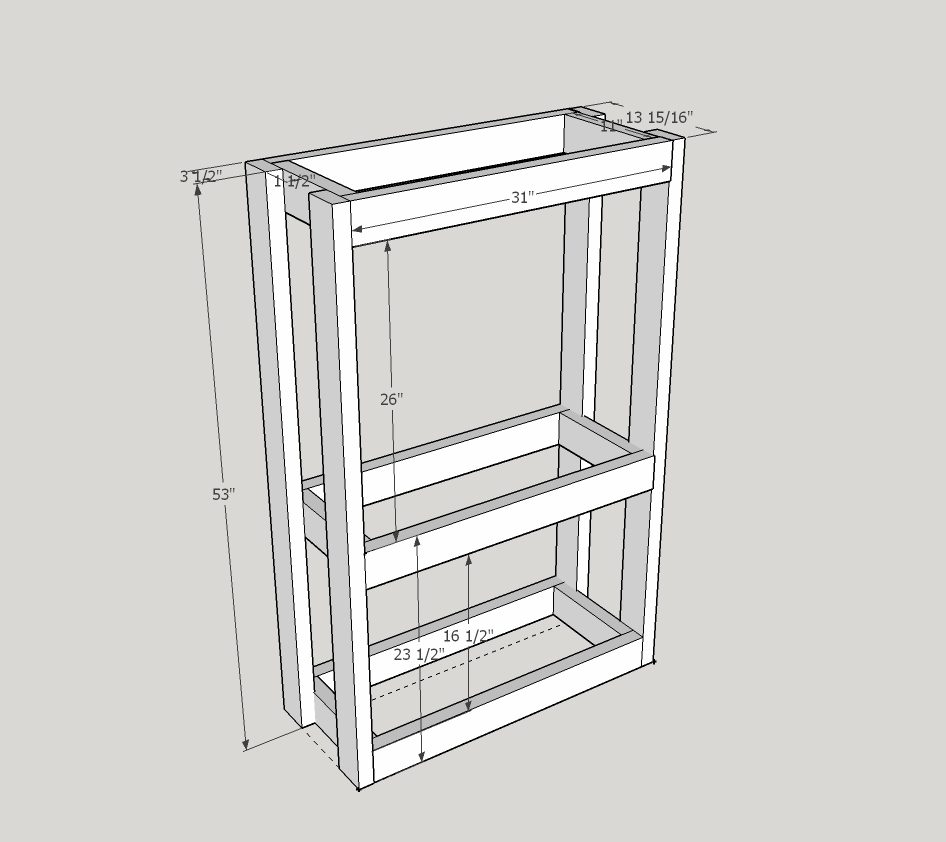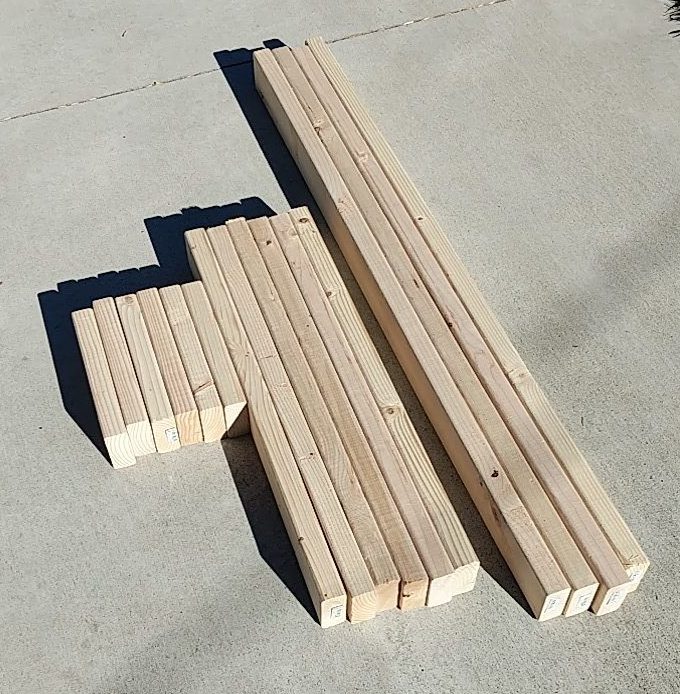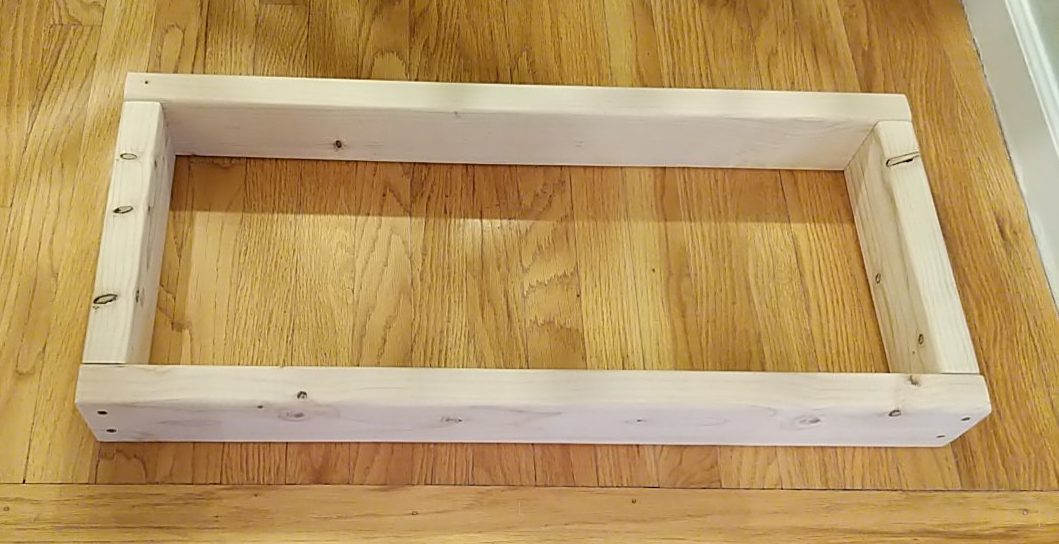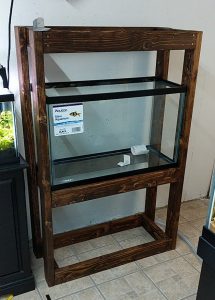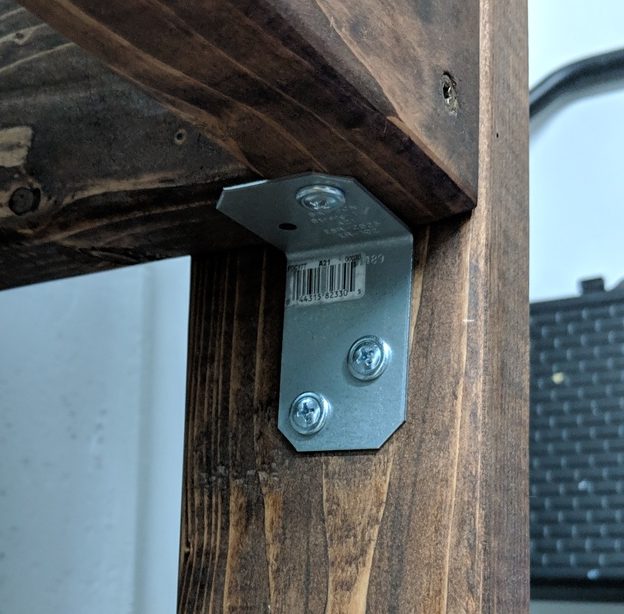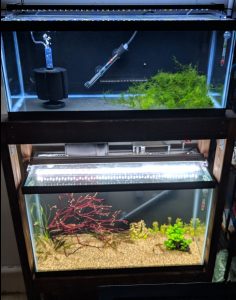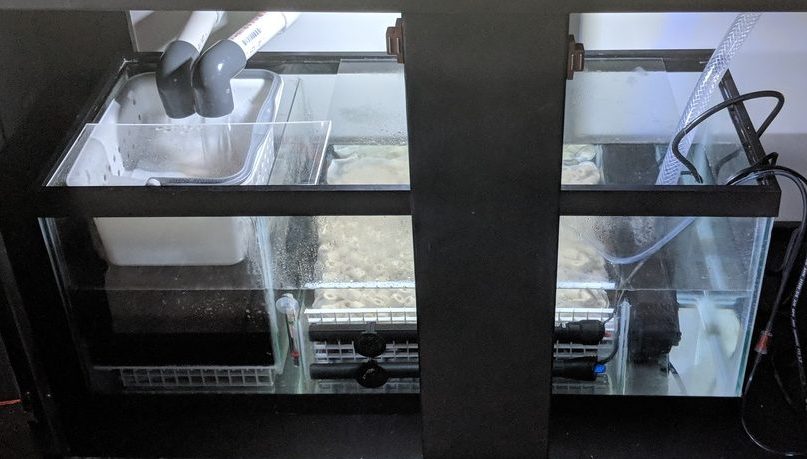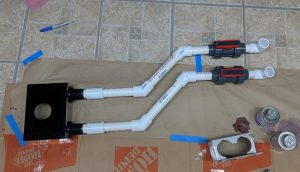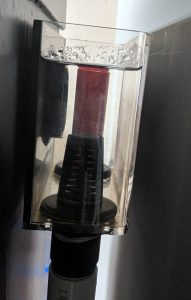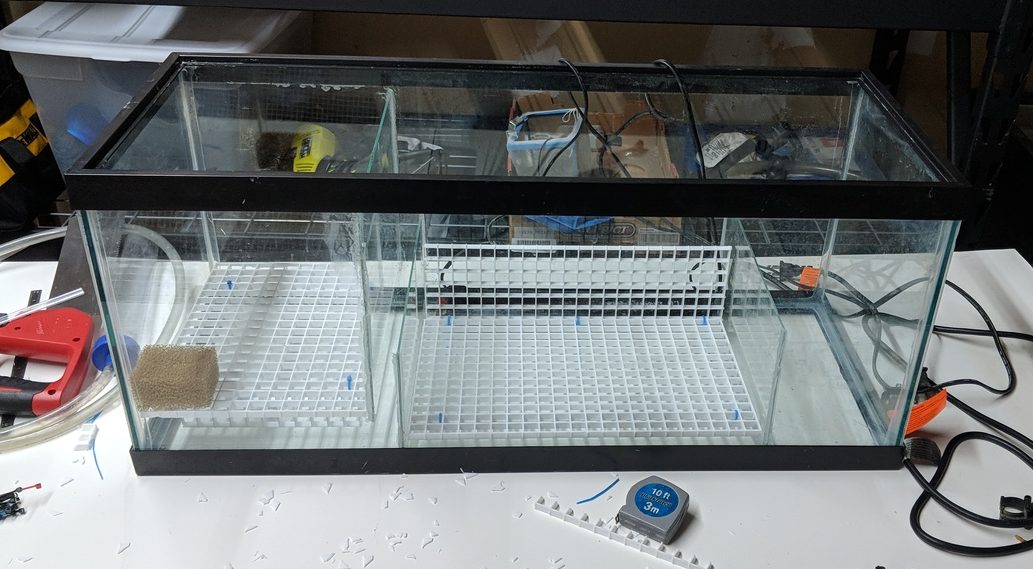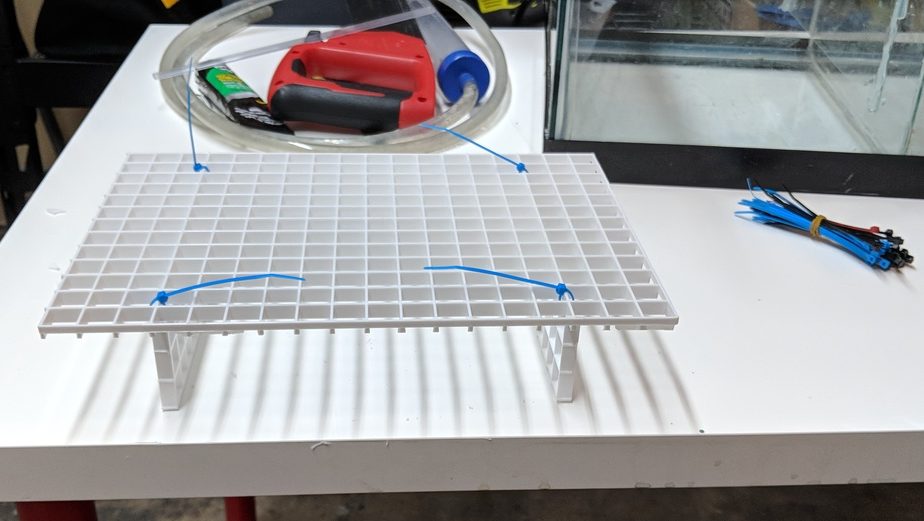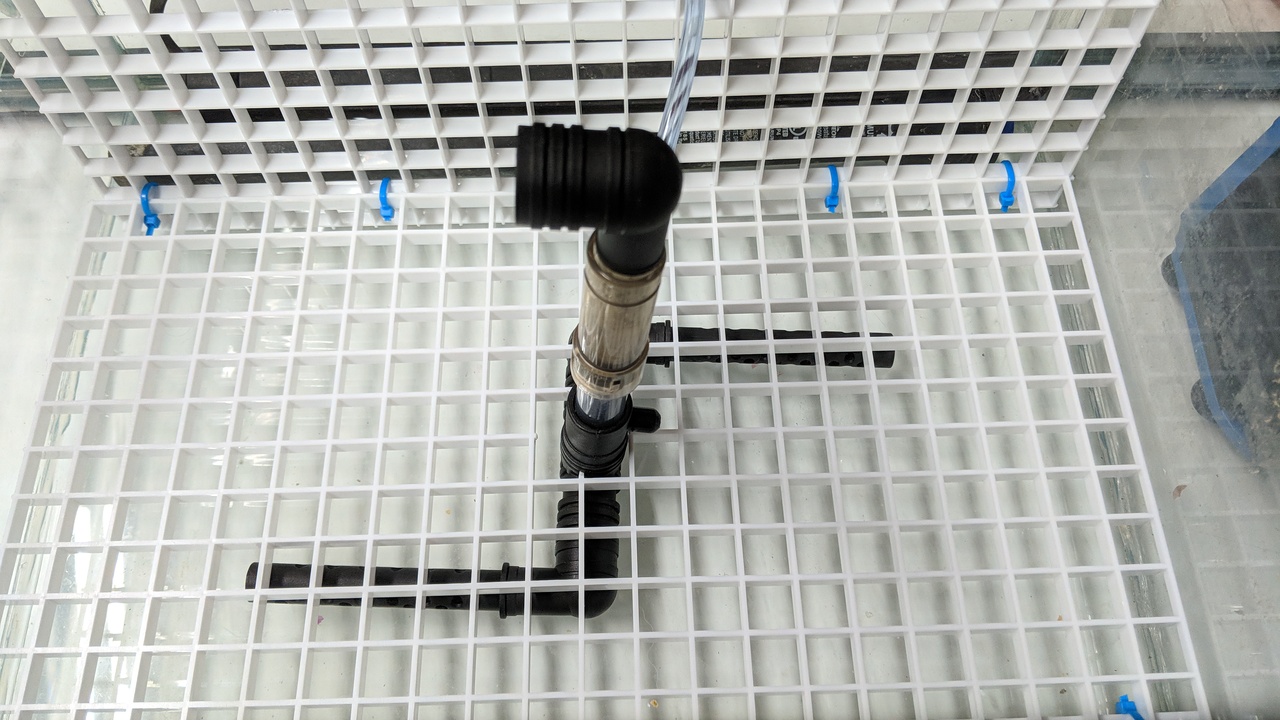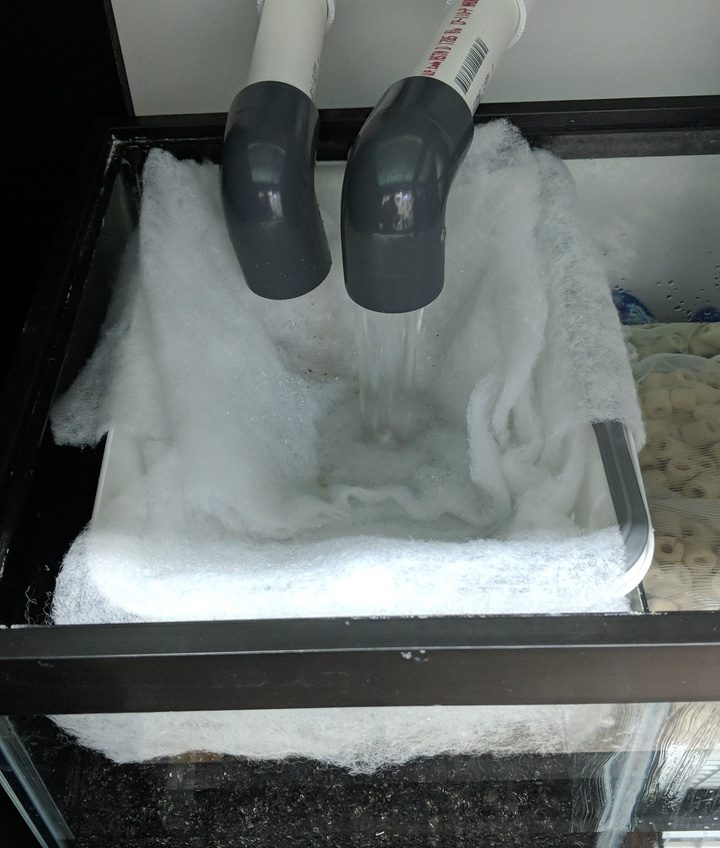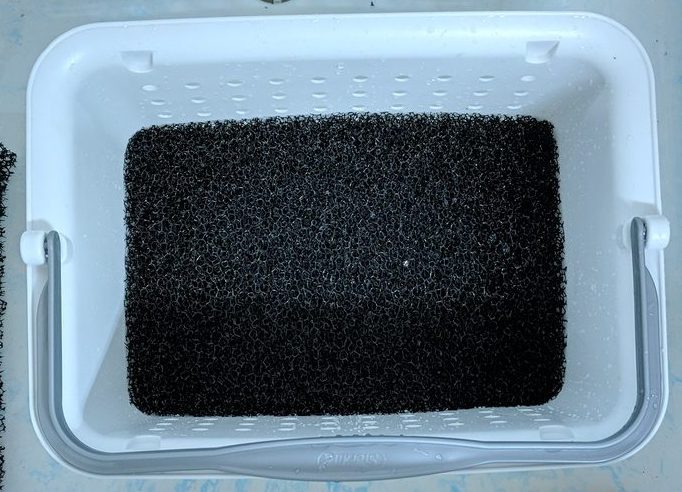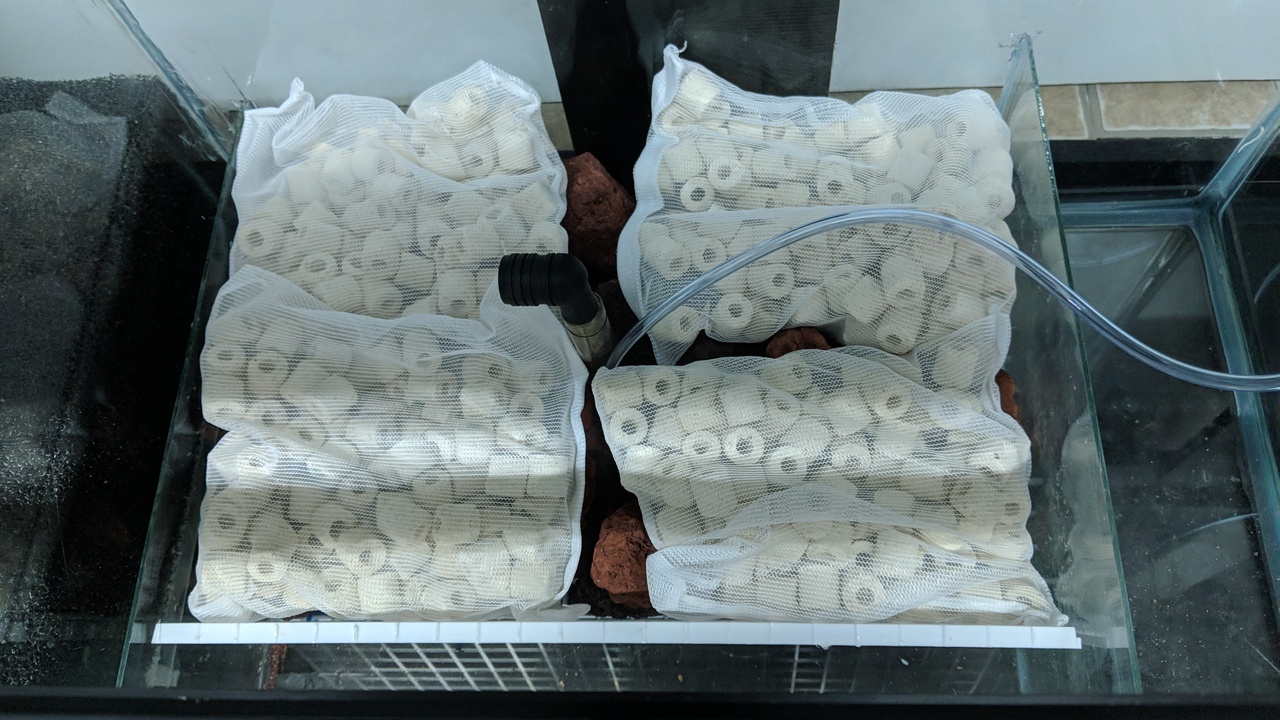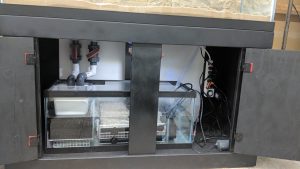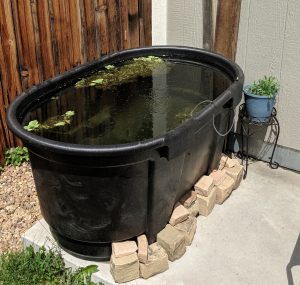
Outdoor Fish "Tubbing"
Keeping fish in small, temporary outdoor ponds or tubs is often referred to as "tubbing" among fishkeepers. The most popular fish to keep in tubs are probably live-bearers. This includes guppies, Endlers, mollies, platys, and many other species. These tubs are unfiltered and in many cases go an entire season without a water change. This summer I'm keeping guppies in a 100 gallon container in my back yard.
What Temperatures Can Guppies Survive Outside?
Unlike goldfish and koi, guppies can't survive outdoors in cold weather. While most sources will list the minimum acceptable temperature for guppies anywhere from 65°F - 72°F, they can tolerate water as cold as 60°F for short periods of time.
Where I live in Colorado, there is only about a 3 month window every year when temperatures are consistently warm enough for a guppy tub. The chart below shows daily average high and low temperatures specific to my area.

Water doesn't heat or cool as quickly as the surrounding air. This means the water in an outdoor tub usually won't reach the daily high or low temperature on a given day, it will drift gradually between them. The average water temperature should be near the center of the daily range. There will also be a temperature gradient between the water's surface and the bottom of the tub, assuming it is sufficiently large.
Actual Guppy Tub Temperature Observations
During the month of June I took temperature readings of my guppy tub at least once every day, up to 3 observations per day, for a total of 55 observations. The data I collected is shown in the chart below. You can see that on very hot days the water temperature (measured using a floating thermometer at the surface) reached as high as 86 degrees. This only lasted a few hours until the sun set, but I am planning on setting up some afternoon shade for the tub going into the hottest part of the year. As you might expect from historical weather data, the average water temp observed in June was 71.5°F.
Note: All of these temperature observations were made at various times throughout the day between 7:00 AM and 7:30 PM. The highest temperatures were observed in the late afternoon after several hours of direct sun.
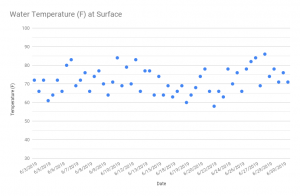
| High | 86 |
| Low | 58 |
| Average | 71.5 |
I kept the guppies in an unheated aquarium indoors at 68°F - 70°F for several months in preparation for this project, during which time they continued to breed and grow. I did not observe any deaths during the month shown here, and saw new fry after about 3 weeks of the guppies being in the tub. Based on my observations, guppies are able to tolerate relatively large daily swings in temperature, as long as the extremes are not too hot (above 90ºF) or too cold (below 60ºF).
Outdoor Guppy Tub Container
I chose a 100 gallon Rubbermaid stock tank for this guppy tub project.
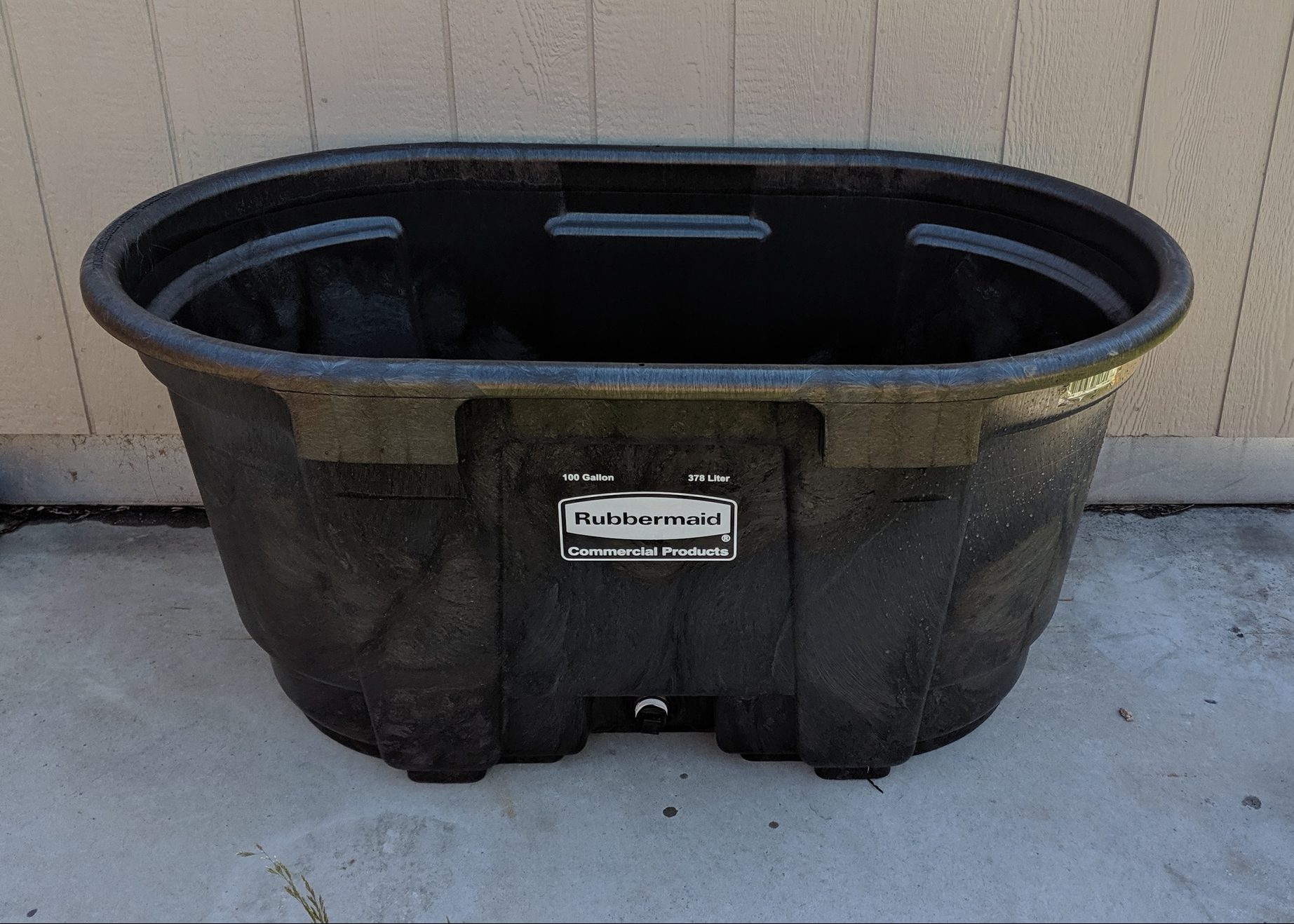
I've seen others use rain barrels, kiddie pools, pond liners, etc. I wouldn't use anything that holds less than 40-50 gallons, because water parameters are going to be more stable in a larger volume of water. You should also avoid any container that is too tall and skinny, as this will make viewing and catching the fish difficult. Stock tanks (horse troughs) are the ideal shape for a garden pond.
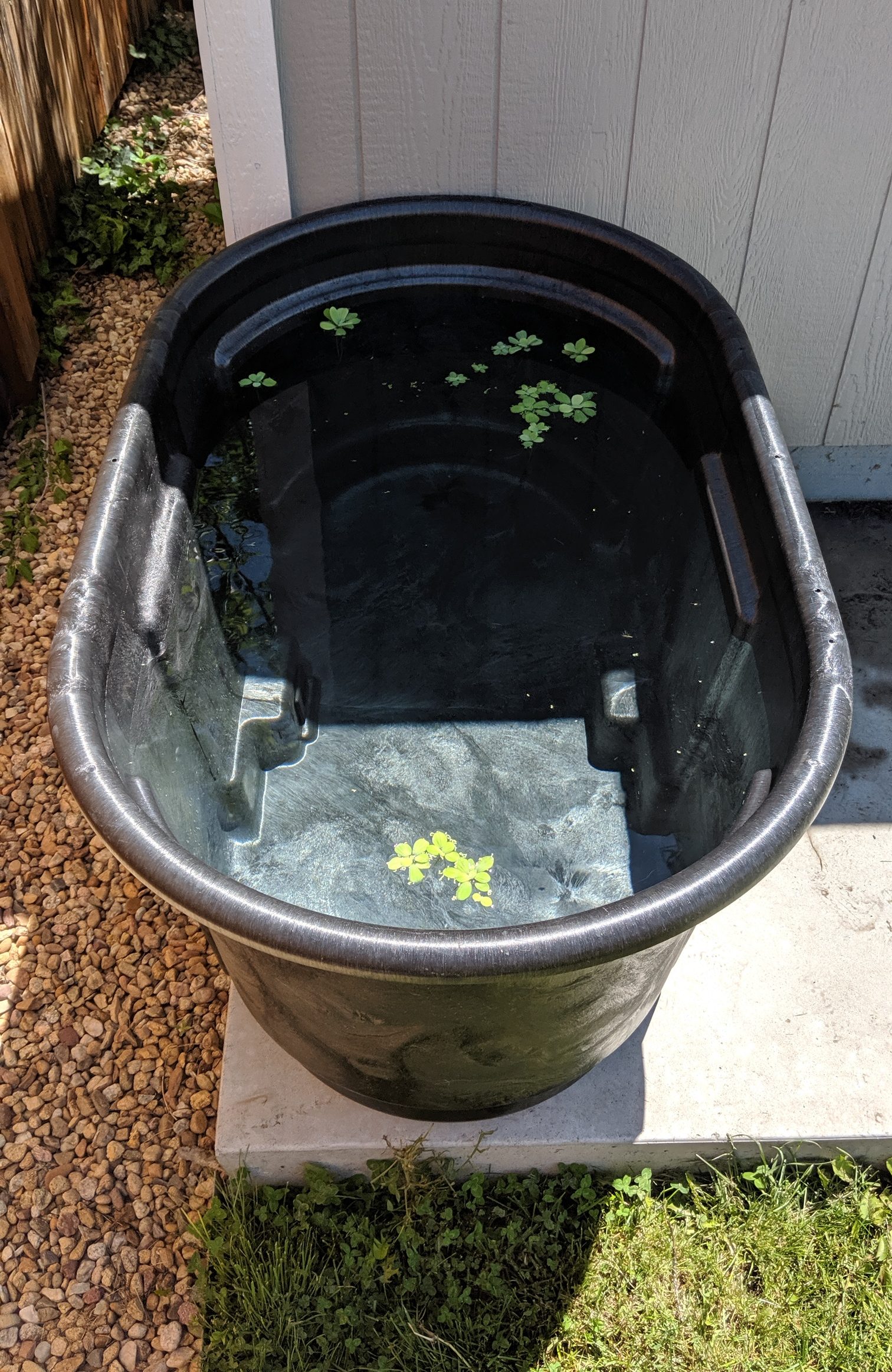
Outdoor Guppy Tub Plants
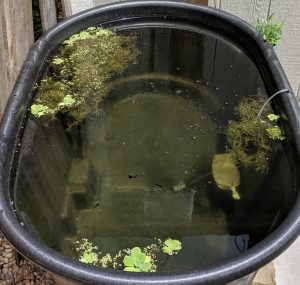
Plants are an essential requirement for outdoor fish tubbing. Since you won't be performing many water changes, plants will help to remove excess nitrogen. They also compete with algae for nutrients. A pond without any plants will quickly turn green after a few days of sunlight. Any aquatic or marginal plant could be used in an outdoor guppy tub project. Some common pond plants include water lilies and water lettuce.
I set up this pond with some duckweed & water lettuce from my Endler breeding aquarium. I also added a large portion of najas/guppy grass. Guppy grass can be grown either rooted or as a floater, and is often used in breeding live-bearers. Floating plants are a good choice for an outdoor tub because the roots provide shade and cover for the fish, and they don't require any substrate.
Adding Fish to an Outdoor Tub
Ideally you'd want to have an outdoor tub filled and planted for several days before introducing fish. This gives the water an opportunity to age in the sun, as algae grows and infusoria begin to develop. I added water from established aquariums to my 100 gallon stock tank, and let it sit for 3 days before adding any fish. As mentioned above, I also prepared my guppies by keeping them in an unheated aquarium all spring before they moved into the tub.
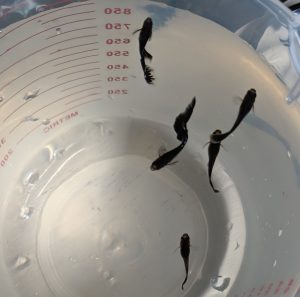
Maintaining Water Quality in an Outdoor Tub
Water Changes
In a perfect world, all water that evaporated out of a tub would be replaced by rainwater, and all wastes would be absorbed by the plants. Of course that's not the world we live in. You should check the nitrates in an outdoor tub just like you would with an aquarium, and do a water change if they rise over 20 ppm. I've found that a 30% water change every 2 weeks is adequate in my pond. This probably wouldn't be necessary if I had enough plants to entirely cover the surface.
Aeration
I use a solar powered air pump to oxygenate the water. More on that in this post, but you can get the solar panel I'm using here on Amazon. You'll also need an air pump that can run off USB power, which I got from Aquarium Coop (https://www.aquariumcoop.com/). You can also buy them on Amazon. This pump runs about 10-11 hours per day (you know, solar) and does a good job keeping the water from getting stagnant.
